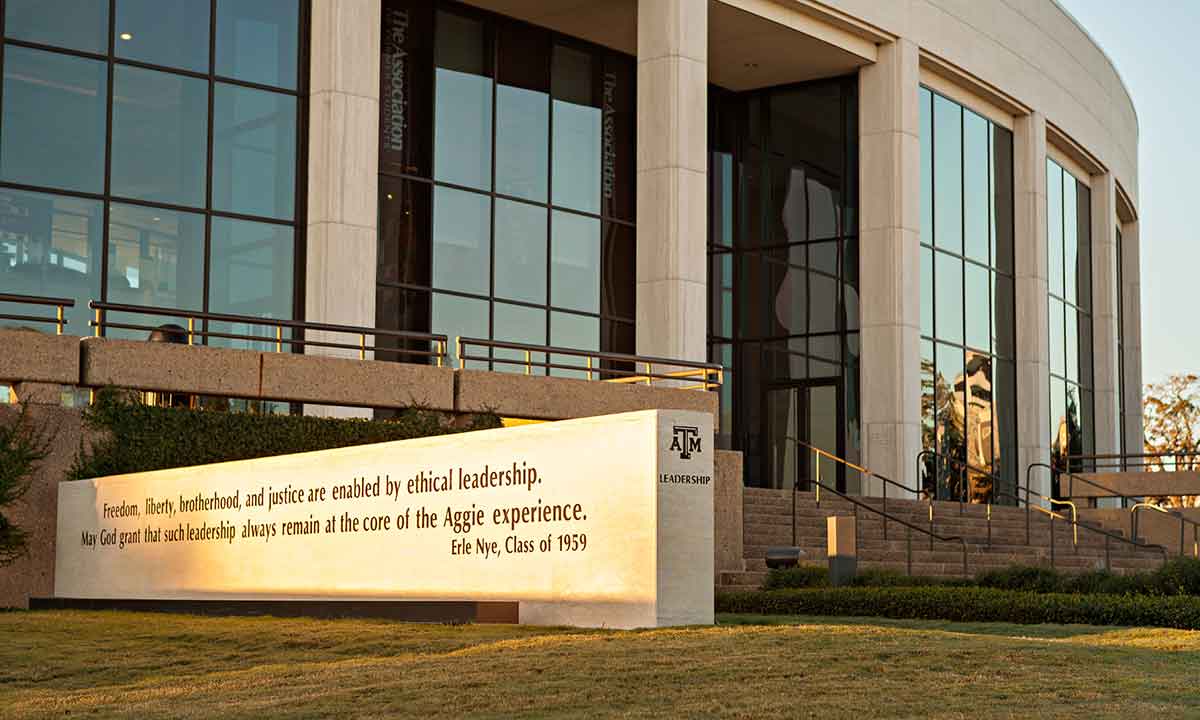Many College of Engineering students are members of the Texas A&M Corps of Cadets, a program that helps young men and women learn, practice, and develop critical leadership skills that will serve them for the rest of their lives.
 In order to truly engineer a better future for our communities to the fullest extent, we, as engineers, need to continuously aim for growth and success in our work. As we grow closer to getting our Aggie degrees, we also grow closer to being in companies where we will move up in our roles.
In order to truly engineer a better future for our communities to the fullest extent, we, as engineers, need to continuously aim for growth and success in our work. As we grow closer to getting our Aggie degrees, we also grow closer to being in companies where we will move up in our roles.
As a civil engineering student who also has a deep involvement in the Corps of Cadets and Aggie Band, I’d like to share a few of my favorite leadership lessons I’ve picked up from my time in the Corps, as well as tips for reaching that goal of creating the healthiest and most productive work environments we can now and in our careers.
1. Invest in the success of your people
Teams and organizations will never find true success until their leaders learn to invest time and effort into seeing their people succeed. Empowering people to grow as individuals not only helps overall morale but improves the productivity of the whole. If an employee’s growth stalls, so will their passion, productivity and pursuit for continuous improvement.
One of the first things I noticed when I joined the Corps was how the upperclassmen would invest their time and effort in pushing me to reach new heights. The best thing the Corps did for me was give me a community where the people wanted me to succeed more than I wanted myself to succeed — they pushed me harder than I was willing to push myself and I was better because of it. Their investment in my success gave me the tools to do the same for the people who have come after me, and that mentality has served me in every major facet of my life.
2. Problem Solving vs Problem Suppression
Throughout my time in the Corps, I’ve seen many leaders waste significant time on insignificant problems that weren’t critically related to the end-game goals of our organization. It happens more often than you think: leaders get caught up in trying to sort out drama and problems that don’t truly matter.
If time and effort is put into solving issues that don’t impact the system’s achievement of the mission, it’s a waste of time and stress because it focuses energy on solving problems that are insignificant. On the other hand, if you ignore a true problem because you misidentified it as insignificant, then the effects will ripple and persist within your organization, hurting its efficiency.
In order to lead a team or organization to being the best it can be, develop a strong understanding of what problems are — and aren’t — within your sphere of responsibility. So next time you’re leading a team and you’ve run into a problem, ask yourself first whether or not the problem is really crucial.
3. Sweatshops and Soup Kitchens
My self-coined term, “Sweatshops and Soup Kitchens,” is the result of having observed many different team environments develop and grow over my years in the Corps. My time there has allowed me to see how people develop after being in a team that is based on negative driving factors (similar to how people run sweatshops) versus being in a team that is built on positive driving factors (such as a soup kitchen). The difference in each is stark.
Sweatshops are team environments that push people to reach a goal using punishment/negative reinforcement and are often primarily profit/metric motivated. An environment built on negativity and a lack of greater purpose will lead to people aiming only to do well enough to not receive consequences. This mentality of reaching for minimums leads to a lack of aspiration for progress and will cause teams to reach less success in the long term.
Soup kitchens conversely are environments that function on positivity and an intrinsic motivation for having an impact on people. An environment built on positivity and a sense of purpose will lead to people reaching for their best because of their intrinsic motivation to create progress, and it will predicate overall greater results and a more positive impact. This type of environment develops people for the long run and allows the team to reach greater success.
I truly believe that with these lessons, along with many others we are certain to pick up along the way, we as Aggies can help companies build better futures and happier employees.
By applying these principles, I’ve been able to facilitate a better environment for all of the cadets I am responsible for. Helping to build a success-conducive environment for the people I am surrounded by has been one of the greatest joys of my time here at Texas A&M, and it is a passion I will carry with me throughout my future careers.

